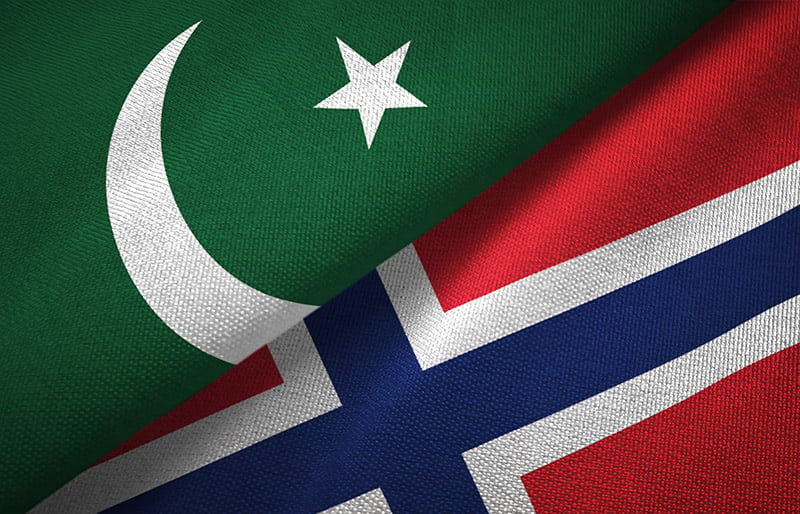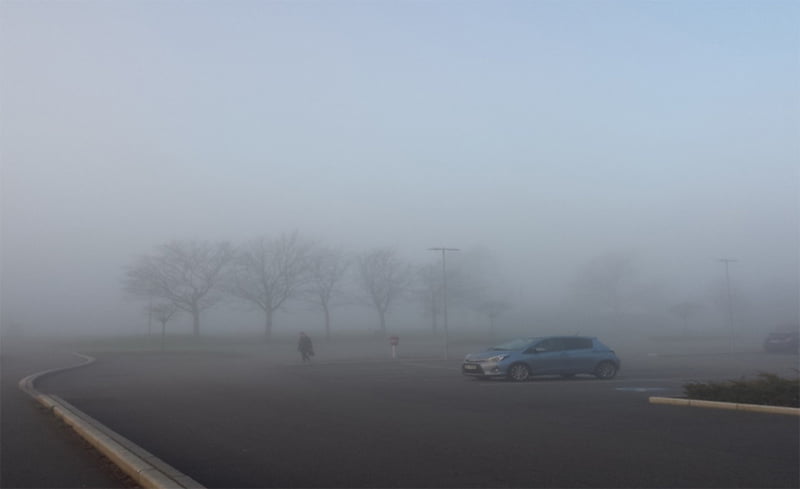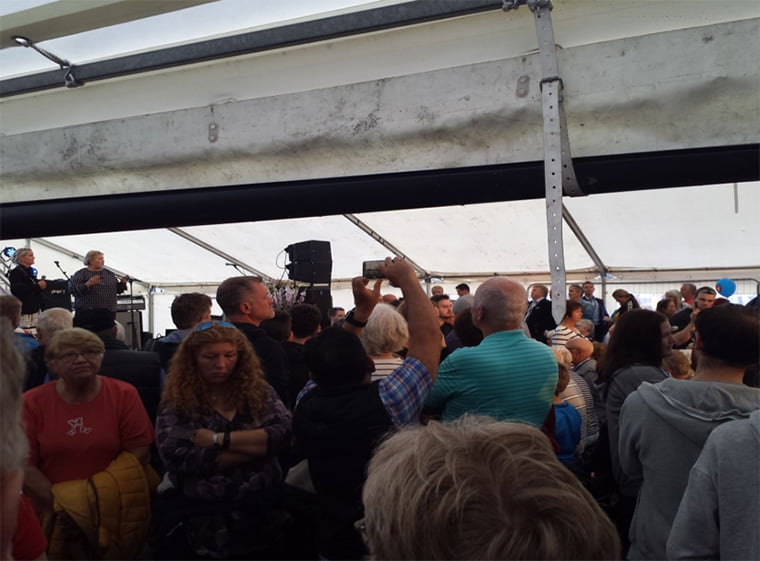The diary of a Pakistani millennial in Norway: Of sleepy towns, crossing roads and political protests.
I’ve always found it fascinating how people identify themselves; what identity-markers they use in a particular situation.

Moving to Norway to join my husband, who works here, has given me another wonderful opportunity to observe this phenomenon.
First impressions of Klepp
I came to Klepp last year fully expecting a bustling metropolis, with skylines, crazy traffic and countless people on the go with their noses in their smartphones and little time to look around and relax.
So, it was quite a shock to land at Sola airport and see just how ‘relaxed’ it all was. Everything from the security people, the airport staff and the whole ‘air’ of the place.
It was an even bigger shock to see not a single high-rise building in the vicinity of my new home that I share with my husband. And so my first impression of Norway, and indeed Klepp, was that of underwhelming surprise. Like the morning tea that you’ve been eagerly waiting for arrives too late, too cold and too bland!
For me, this sleepy little town was the exact opposite of what I was used to: too many playgrounds and parks, but too few people to enjoy them!

Empathy through travelling
As someone who had to change several schools—and cities—because of my father’s job, I’ve learnt what it means to be regarded as the ‘other’.
Empathy, to me, is one of the most important traits one could adopt. As a child I was raised in the UK because of my father’s studies and later as part of his job responsibilities. I, as a Pakistani Muslim, remained a minority for the most part of my childhood and schooling years.
When we returned to Pakistan, I became an outsider despite having the same ethnic and religious background as my other classmates. By the time I joined university, I had resigned myself from ever fitting in.
Yet, interestingly enough, my new classmates—most of whom belonged to far-off, economically deprived areas of the country—viewed me as a privileged individual of the majority class by virtue of my ethnic and sectarian identity.
Unexpectedly, I, like many others like me, was expected to extend a hand towards others; those underprivileged individuals who were misunderstood by the state and the majority.
Being part of a class full of students with diverse backgrounds and cultures, I found myself struggling to navigate through conversations that were full of scorn towards the state for ignoring and polarising a significant part of society from the mainstream. This was perhaps the first time I seriously considered studying issues of identity, culture and politics in detail.
Read more: The Debate on Structural Racism in Norway
While I prided myself on my ability to identify with and understand others’ points of view, I had never considered transferring that interest to research. I spent most of my Masters immersed in passionate discussions about the Pashtun, Sindhi and Baloch culture and how identity fit in the narrative of conflict. In particular, I could not wrap my head around how feelings of distinctiveness give way to violent conflict.
Identity and belonging
Life in Klepp seems a world away from these issues; and yet, if I truly think about it, identity, conflict and belongingness, or the lack of, aren’t all that irrelevant here either!
When I first came here, even a simple task such as crossing the road was in itself an experience for me. Not because of crazy traffic, honking about and refusing to give way; rather the opposite!
While I would stand on the side of the road as I was used to all my life and wait for the road to clear of cars and vehicles, in Norway I found cars stopping all the way away from the zebra crossing to allow the pedestrians to cross the road first.
Apparently the pedestrians have the first right to cross the road on a zebra crossing. This was miles away from how its done back home: in some of the larger cities traffic, that mainly includes motorbikes, motor rickshaws and vans, is so unruly that one has to cross the road at one’s own peril. Believe me, I have tried several times!
One morning in October last year, on my daily commute to the language school on my bus, we had to wait for several minutes before a zebra crossing because the driver insisted that a lady with a stroller cross the road first despite her doing the exact thing for the bus! In my opinion, it says a lot about a nation’s moral values how they behave out on the road.
A visit from the Prime Minister
Back in September last year, I spotted a sign around the local shopping centre announcing its expansion and the arrival of the Prime Minister in the opening ceremony. Coming from a relatively politically aware family, it was a very appealing idea to witness first-hand another country’s head of the state interact with its people.
Klepp, on that day had more people out on the streets than ever. It was a treat watching people out and about, where previously the shopping centre had been nearly empty! That day I also got to witness a real-life protest here in Norway. The issue: ‘Bompenger’.

Less than a hundred people gathered outside the main tent where the PM was to deliver her address, with placards and posters protesting against the road toll tax, chanting ‘nok er nok! (enough is enough!). Although at the time, my husband and I were grappling with our phones, connecting to google translate in an attempt to translate the slogans on the placards!
Peaceful political protests
Some of the protesters had managed to get into the tent and interestingly enough sat quietly on the benches with their posters. The moment that the PM came on stage to deliver her speech, these protesters silently stood up and turned their backs towards the stage with their placards facing the stage. Once the PM had finished her speech, the protesters turned back and sat down again.
Now, I don’t claim to be an expert of protests; yet I’ve had the chance to witness quite a few. And I must admit this had to be the most peaceful, the most silent one ever! A few days later I saw another group of around 25-30 people and 6-7 cars passing by outside our home with placards and chanting the now-familiar ‘nok er nok’ chant.
Different from protests in Pakistan
For many developing countries, Pakistan included, the system is more fixated on counting the number of protestors and the forceful means through which they show their strength rather than the issues they are protesting about. The bigger the better; the more violent, the more likely it is for the government to address the issue.
Last year in November, the apex court in Pakistan acquitted from all charges Asia Bibi, a Christian woman who had been sentenced to death in 2010. Within hours of the judgement, protesters backed by the Tehreek-e-Labbaik Pakistan (TLP), a rabid, fast-growing political party that exists solely to punish blasphemers, brought the major towns and cities to a virtual standstill in protest over the acquittal.
Private-owned cars and motorbikes were burnt; ambulances were forced to be stuck for hours on end as traffic was halted; businesses closed; schools, colleges and universities were shut by authorities and thousands of citizens were left stranded with no way to reach their offices.
Such was the chaos and the impunity of the protesters that their leaders continued to spew hate-speech for days, in some cases calling for the army to mutiny against its leaders if they supported the decision of the court and declaring the judges that issued the judgement liable for death!
Yet despite all the mayhem, the government in office was forced to bow down to the protesters and to concede some major concessions including the freeing of all protesters that had been imprisoned for disturbing the law and order situation in the country despite issuing strongly-worded warnings to them previously.
The reason was not that anyone in the government had any soft spots for the cause of the protesters; rather that in Pakistan, parties and groups having the street-power and the ability to bring cities to a standstill more-often-than-not get their way.
It was the same with the Muttahida Qaumi Movement (MQM), which by the 1980s had become the sole most prominent party in urban Sindh with the most street power. The brutal strength and sheer force employed by the party’s workers enabled MQM to literally rule Karachi, the largest metropolis of Pakistan, prompting critics to refer to it as a militant, even fascist organisation.
Conduct during conflict
In Norway, as is with most western societies, things are done quite differently. After witnessing the ‘thirty-people protest’ as I have begun calling it, I learnt that the government had decided to abolish the toll tax between Bryne and Klepp.
Where previously I had naïvely laughed at the small number of protestors, I now marvelled at the governance and democratic traditions of the country- after all, it speaks volumes about a nation how they conduct themselves in times of conflict and difference of opinion.
The Norwegians may have numerous issues and disputes with its government yet they are fortunate to have a system which addresses the problems of its people quickly and efficiently- something that we Pakistanis would fare well to learn from!
Norway has so far proven to be a beautiful place with beautiful people. Yet, as is with humans, there are also a lot of contradictions and paradoxes to be found here. Still though, it seems I’m all set to continue interacting with new people, learning, unlearning and relearning right along with them, and to truly understand the ‘alternate perspectives’.


My interest for life in Norway landed me on this website and the Pakistani flag compelled me to read your article. I loved it thoroughly for its conciseness, softness and the insight and comparison drawn between the countries. Thank you 🙂